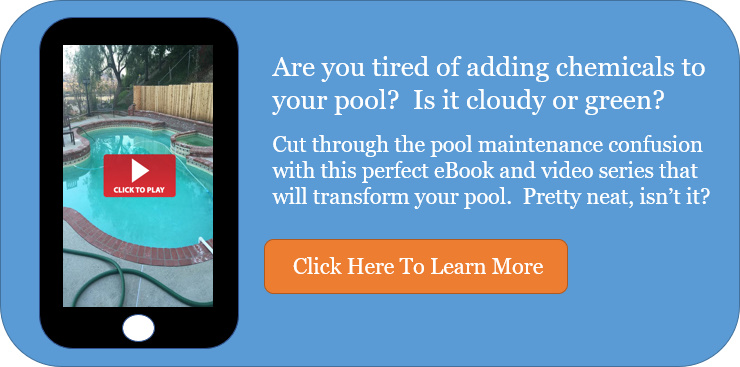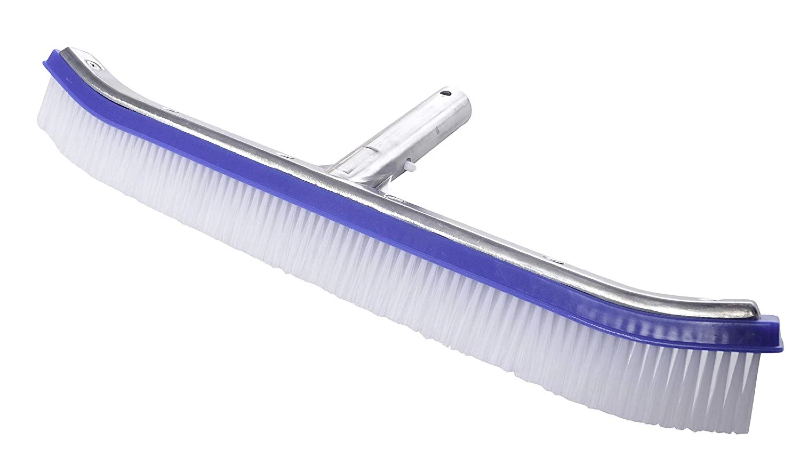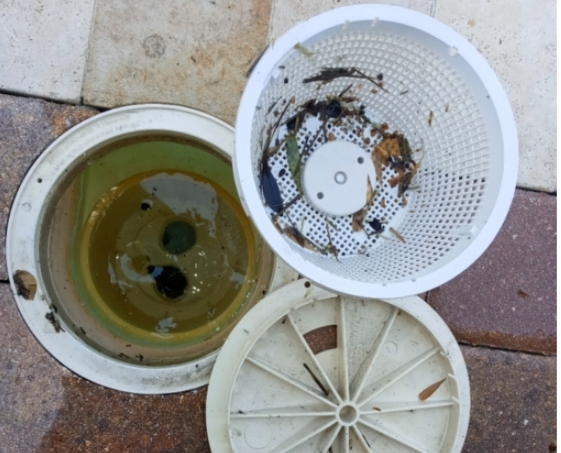- Home
- Maintenance
- Pool Maintenance Mistakes
Pool Maintenance Mistakes You Can Fix Now
Let's face it. Everybody makes mistakes sometimes. It's part of being human. And pool maintenance mistakes are no exception. Even the best of us can mess up from time to time. Fortunately, there are do-overs with our pools. Mistakes are just happy accidents, to quote a famous painter. They're an opportunity to learn what to do, and sometimes, what not to do. If we can learn from our mistakes and do better next time, we're well ahead of the curve.
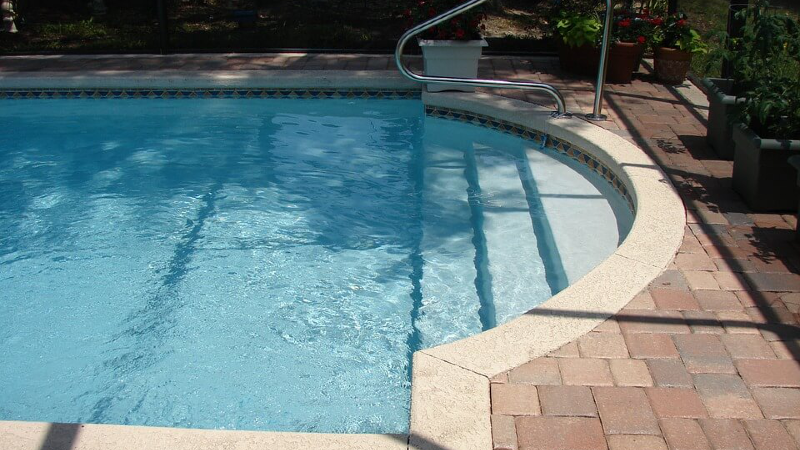
1. Ignoring Your Pool Chemistry
I could write 5 pages about the importance of testing your pool chemicals on a weekly basis. The biggest mistake is not balancing your CYA first. Yes, you read that correctly. Balancing your CYA is #1, even over your pH and alkalinity. I'm well aware it’s probably the one thing you’ve heard the most. Your pH levels should be 7.2 to 7.8 and the alkalinity is best in the 80 - 120 ppm range. But, you might say, I've always heard to balance the pH and alkalinity first. Why the CYA?
I'm glad you asked, and here's the answer.
All the chemicals, with the smaller exception of the calcium hardness, which I talk about on another page, can easily be raised and lowered using chemicals. Is our chlorine too low? Then we would raise it using liquid chlorine. How about our pH? Is it too high, or too low? No problem. If it's too high, we can add muriatic acid to lower it. That takes about 30 seconds. If our pH is too low, no problem. Add some Borax in the skimmer, turn the pump motor on, and walk away. Super simple.
Now let's talk about our CYA. If it's too low, we can add either liquid or granular CYA to raise it. Here's the secret. If it's too HIGH, we must do a partial drain and refill to bring it in the right range of 30 - 50 ppm. Why would we add anything to the pool, be it algaecide, chlorine, or pH Down, if we need to do a partial drain and refill? That's insanity. Those chemicals we just added are literally going down the drain. We're wasting time, chemicals, and money, and who wants that?
So let's get our CYA right first, because all the other chemical readings are simple.
The Solution
You will want to test your pool water at least twice per week during the swimming season and once per week during the off season. Balancing your chemicals will help keep your pool water safe, clean, and inviting to you and your swimming guests.
2. Not Using The Best Pool Test Kit
If we want to keep our pool water clean and safe, we need to be testing it. And that means having a good test kit. Testing our pool water is one of the most important things we can do as pool owners. Testing our pool water is not difficult at all. In fact, I taught over 30 lifeguards at the YMCA, many of whom were only 15 - 16 years old, to test and maintain a 125,000 gallon commercial salt pool with 7,000 swimmers per month. Testing your pool water is so easy, and you'll be able to master it in a little under an hour of practice.
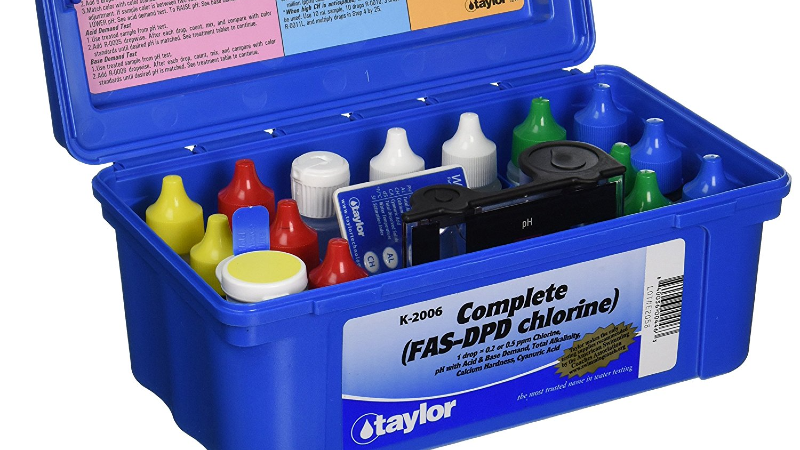
The Solution
The kit I taught the lifeguards how to use was the Taylor K-2006 test kit. Test strips are o.k. for quick tests, but if you truly want to master your pool chemistry, you will surely need a good test kit. The Taylor K-2006 is the best on the market and will give you the numbers you need. If a 15 year old lifeguard can do it, I know you will be able to take care of your pool.
3. Not Cleaning Your Pool Deck
Clear water starts with clean water. And clean water starts with a clean deck. Far too many people overlook their decks. Pool deck cleaning can preserve the deck's integrity, reduces unnecessary repairs, and ensures a safe area for you and your swimming guests. Maintaining a clean pool deck means cleaner water. It also creates an attractive area for entertaining guests.
The Solution
You can use a diluted solution of bleach and soap with a good scrubbing brush for regular pool deck cleaning. Make sure you rinse the area thoroughly. A power washer easily removes stains, grit, slick spots, algae growth, chlorine residue, and other pool chemicals.
4. Not Maintaining The Right Pool Water Level
I've been doing pool inspections for a while now, and how many pools have I seen where the pool water level isn't where it should be? Way too many. A pool water level that's too low will cause the pump motor to suck in air, and that's not good. Your filtration system is designed to move water, not air. Having a water level that's too low can damage your pool pump motor.
A water level that's too high will not allow the skimmer to do its job of skimming leaves and debris from the top of the pool. Your unwanted floaties should be in the skimmer basket, not on top of the water.
The Solution
Maintain your pool water level 1/3 - 1/2 up from the bottom of the skimmer. This will ensure enough water is being pulled by the pump motor, and there's enough suction so the debris can find its way into the skimmer basket where it belongs.
5. Backwashing Your Pool Filter Too Often
If enough is good, then more than enough is better, right? Well, let's take a look at this. Backwashing is an important function of your pool maintenance. It cleans the media inside your sand or diatomaceous earth (D.E.) filter. Backwashing flushes all the nasty gunk out of your filter. Once that gunk is gone, you start with a clean filter once more and the process continues. Too much backwashing really accomplishes little, and it can damage your pool filter.
The Solution
The laws of physics are working in your pool filter. When you have nice clean filter media, the pool water can move through the filter with ease. As your filter collects more debris and particles, the clean filter media area starts to decrease. Your filter is pushing the same amount of water, just through a smaller area. This decreasing of a clean area is what causes the filter pressure, or PSI, or increase. Once the PSI gets too high, it'll be time to backwash.
Make a note of where your "just backwashed" pressure is. Normally it will be around 10 PSI. When the pressure in your filter hits 10 PSI over normal, you'll know it's time to backwash. Reducing the pressure on your filter will keep your system running at peak efficiency.
6. Adding Chlorine or Shocking Your Pool During The Day
Our chlorine has a hard job. It must kill all the algae and bacteria in the pool. It's our job to give the chlorine its best chance for success. That means the amount of chlorine we add is just as important as when we add it.
It's not a good strategy to add chlorine to our pool during the day for one big reason: the sun will burn up the chlorine quickly. Our CYA and pH allow the chorine to do its job, but by adding it during the hottest part of the day, the sun can eat through much of the chlorine. This wastes time, money, and chemicals.
The Solution
Add most of your chlorine during the evening or at night, and make simple smaller adjustments during the day, or when needed. By adding the bulk of our chlorine at night, it'll give our chlorine the best chance to filter through our entire system and effectively kill the algae and bacteria in the pool.
7. Adding Chlorine or Shock Directly Into The Pool Skimmer
Adding chlorine and shocking our pool is good. Very good. Adding chlorine to our skimmer is bad. It could be explosively bad. This is especially true if you have an in-line tab feeder that uses stabilized trichlor tabs. Granular calcium hypochlorite pool chlorine doesn't play nicely with trichlor, and the chemical reaction could be disastrous.
The Solution
Add liquid and granular chlorine directly to your pool, or dilute it in a bucket filled with pool water, then add it to your pool.
8. Not Brushing Enough
Not brushing and sweeping your pool could result in nothing, or it could result in something big. This depends on your pool and situation. The important thing to remember is the longer we go between brushing our pools, the more chance dirt and algae has a chance to take strong hold on our pools. Contaminants can build up quickly and form a layer on the pool surface. The water might look clean, but it's probably dirty.
The Solution
Let's brush our pool at least once each week to eliminate this yucky buildup. It might take only 10 - 15 minutes, but it will save hours of work and expense down the road. Brushing our pool includes:
- Stairs
- Steps
- Walls
- Behind ladders
- Corners
9. Not Running Your Pump Motor Long Enough
Running our pump motor less saves money on our electric bill. Who doesn't love to save money? A few hours here and there and the savings can add up. Reality says running our pump motor less than our pool needs it will cause more problems than it solves. Uncirculated chemicals and ineffective filtration will lead to contamination overload and dirty water. Your pool will get dirtier faster.
The Solution
We should run our pump motors at least 8 hours each day during the swimming season and 4 - 6 during the off-season. 8 hours per day is enough time for most pools to complete 1 full cycle, which means all of the pool water is passed through the filter.
PRO TIP: Run your pump motor at night during off-peak hours to save money on your electrical bill.
10. Not Cleaning Out The Skimmer Basket
I just finished a pool inspection as of this writing. I inspected the skimmer and the basket and it was absolutely filled with leaves, sticks, and who knows what else. Having a skimmer full of debris will decrease your pool's filtration capacity. It will also decrease the amount of water flowing to the pump motor and eventually put too much of a strain on it.
The Solution
This one is easy. Check it once per week and clean it. Just remove the skimmer basket, take out all the debris, then reinstall it. This will ensure your skimmer is doing its job at getting the debris on the top of the pool and helps with water flow and circulation.
PRO TIP: Purchase a skimmer basket with a weight on the bottom. This keeps your skimmer basket firmly in place and will not float to the top when the pump motor turn off.
11. Not Vacuuming Your Pool
We intrinsically know the importance of vacuuming our pool, but too many pool owners will skip a week or two. Hey, the pool looks clean, right? Not vacuuming when your pools needs it will add up to more cleaning later on, not to mention higher chemical use and more money wasted. Maintenance is the key.
The Solution
Vacuum at least once a week, or when you pool needs it. Lightly used pools with little to no landscaping will require less frequent cleaning compared to a heavily used pool with lots of trees, bushes, and flowering plants. I recommend making a pool care schedule and vacuuming your pool on the weekend.
11. Not Cleaning Your Pool Deck Drain
I see one one all the time as well. I walk into a backyard to do a pool inspection and notice the deck drains are covered in leaves and caked on mold. Water on the deck must go somewhere. It will either go down the drain or remain on the deck. Standing water will assist in algae growth on the deck, which in turn will cause a trip hazard and staining of your beautiful pool deck. The picture below is of a customer's drain.
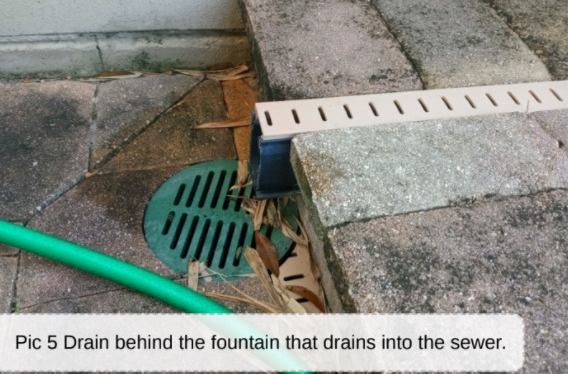
The Solution
Have adequate drainage around your pool is important for your safety and the safety of your family and swimming guests. Not to mention the health and integrity of your pool deck. Walk around your deck once per week and remove any leaves or debris on your drains, especially after heavy rains or wind. You'll find debris in the strangest of places.
How To Become A Pool Solution Pro
We all make pool maintenance mistakes from time to time. We get in a hurry and something is over-looked. But no worries. Every happy mistake is a chance to grow, learn, and gain new experiences. With every pool mistake, that's one less thing we'll not do the next time.
